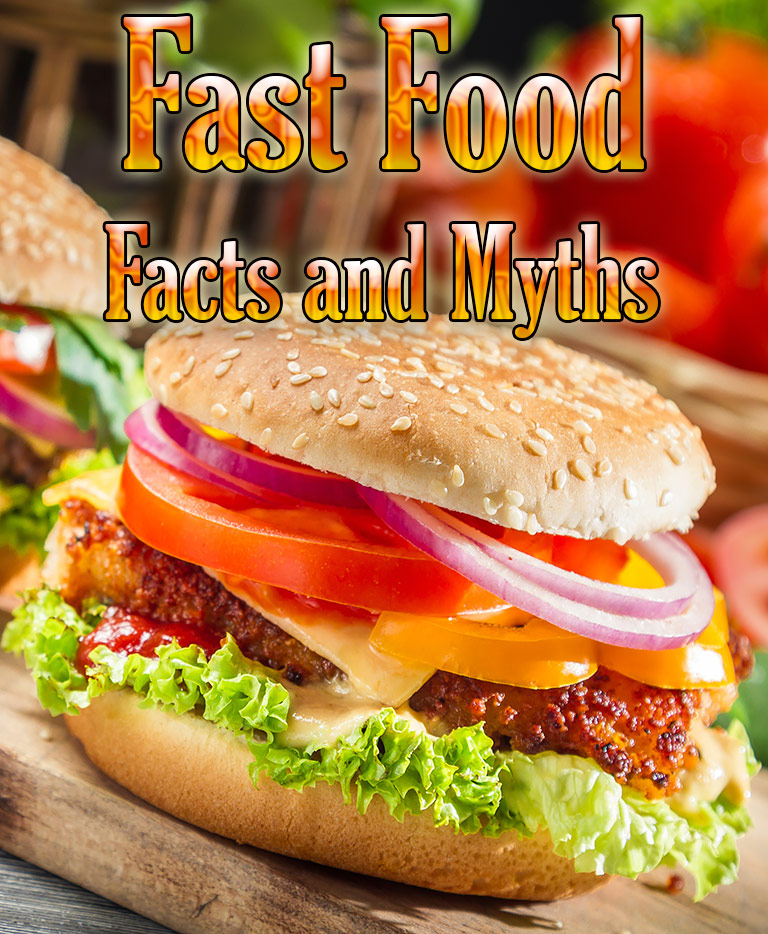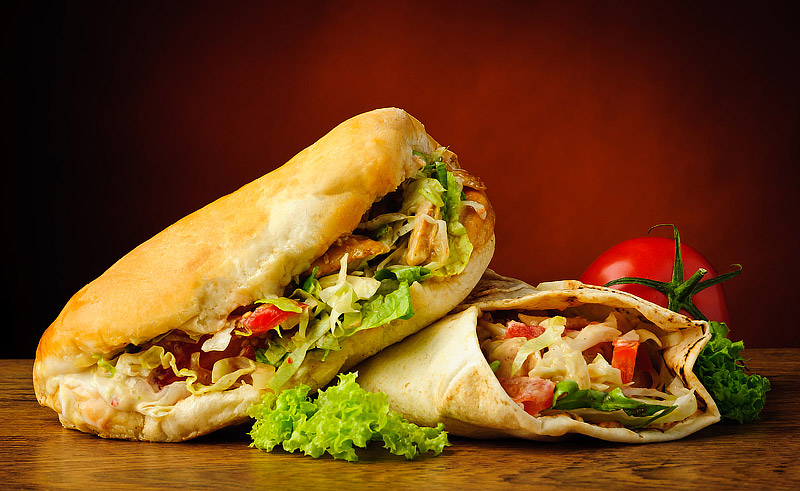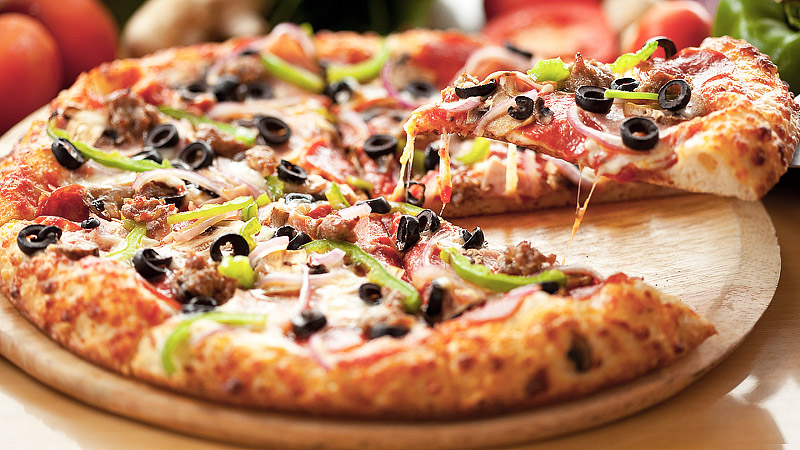
Fast food refers to food that can be prepared and served quickly. Fast food restaurants usually have a walk up counter and/or drive-thru window where you order and pick up your food without having to wait long. They’re popular because they serve filling foods that taste good and don’t cost a lot of money. However, the food is often made with cheaper ingredients such as high fat meat, refined grains, and added sugar and fats, instead of nutritious ingredients such as lean meats, whole grains, fresh fruits, and vegetables.
Is fast food bad?
There is no such thing as a “bad” food, but there are some foods you should try not to have on a regular basis. Because fast food is high in sodium, saturated fat, trans fat, and cholesterol, it isn’t something you should eat often. Eating too much over a long period of time can lead to health problems such as high blood pressure, heart disease, and obesity. People also often drink soda when they eat fast food which adds “empty” calories (calories that don’t make you feel full or provide nutrients) to the meal. It’s helpful to remember that with fast food, moderation is important.
Is some fast food healthier than others?
Many fast food chains have some healthy options to choose from. For example, some chains no longer serve foods with transfat, and many have menu items that contain fruits and vegetables. If you’re having fast food more than once a week, try to make healthier choices.

Here are some tips:
Go light on the toppings: Added toppings usually mean more sodium or unhealthy fats.
To lighten up your meal without taking away flavor:
- Don’t overdo the salad dressing. Choose oil-based dressings such as Italian or balsamic vinaigrette instead of creamy salad dressings such as blue cheese and ranch which are high in saturated fat.
- Use (or ask for) mustard or ketchup instead of mayonnaise or “special sauce”.
- When ordering pizza, add veggies instead of meat, and get thin crust instead of deep dish.
- Top your sandwiches with veggies such as onions, lettuce, and tomatoes instead of bacon or extra cheese.
- Don’t add more salt to your meal. Salt is a major contributor to high blood pressure and heart disease and fast food tends to be loaded with it.
Know how your food is made: The way a meal is made says a lot about how healthy it will be.
In general, follow these rules:
- Choose foods that are broiled, steamed, or grilled instead of fried. For example, pick a grilled chicken sandwich instead of fried chicken or chicken nuggets and steamed vegetables or fresh fruit instead of French fries.
- Choose soups that are not cream based. For example: If the name of the soup includes the word cream or chowder, such as “Creamy Tomato Soup”, choose something else such as a broth-based soup like minestrone or chicken noodle.
- Dishes labeled deep-fried, pan-fried, basted, breaded, creamy, crispy, scalloped, Alfredo, or in cream sauce are usually high in calories, unhealthy fats, and sodium.
- When ordering a sub or sandwich, select lean meats such as turkey or grilled chicken instead of items such as burgers, steak, or cheese sandwiches.
- Ask for sauces or dressings that come with meals to be served on the side and use just a small amount.
Practice Portion Control: Meal portions today are almost twice the size that they were 30 years ago. Because of that, we end up eating much more food than we need.
Try to follow these tips:
- Order smaller entree portions. For example, instead of a large sub, try a small sub with a side salad and low-fat dressing or piece of fruit.
- If you’re getting a side such as french fries, order a small, or kid sized portion. Never super-size anything; these options pack in an even larger amount of calories and fat.
- Don’t fall for the deals. Many fast food restaurants advertise value deals for larger portions of food. These foods may come in what is called a “value box”, a combo pack, or just be a larger portion for a cheap price. If you want the deal, eat only half and save the rest for later, or split with a friend.
- Remember, you can get too much of a good thing. Even if a fast food restaurant uses healthy ingredients, they still usually give you a lot more food than you need. Eating too much of any kind of food can lead to weight gain. Watch your portions, even when you are eating healthier fast foods such as salads, sandwiches, and soup.
Make the Swap: Look for healthier side options for your meals.
- Have a salad, fruit or soup instead of fries.
- Choose water, low-fat milk, or diet sodas instead of regular sodas, fruit drinks, or milkshakes, which can be a huge source of calories and sugar.
- Instead of a slice of pie or cookie for dessert try fruit and yogurt.
Pick This, Not That
Here are a few specific tips to make healthier choices when ordering fast food:
- Hamburger restaurant: choose a grilled chicken sandwich (ask for no mayonnaise) with a side salad and lite dressing or apple slices.
- Sub sandwich restaurant: choose a small (ie. six inch) sub with lean protein (grilled chicken, turkey), plenty of vegetables, and a lite or oil-based dressing.
- Mexican restaurant: choose a burrito without rice, with plenty of vegetables, and with lean protein (beans or chicken) or choose tacos with lean protein (fish, chicken, or beans) and plenty of vegetables. For a topping pick just one of the following: cheese, sour cream, or guacamole.
Enjoy your meal: Sit down while you eat. Fast food is known as a meal on the go. Many people eat in their cars or while doing another activity. If you are distracted, you may not pay attention to how much food you are eating, and you may eat much more than you need. Sit down at the restaurant you visit and pay attention to your meal. If you can’t sit, eat just a little and save the rest for later. That way you won’t be starving once you have the chance to sit and finish your meal, and you’ll be less likely to overeat.
Where can I find nutrition facts about fast food?
The FDA (Federal Food and Drug Administration) has proposed labeling requirements for all fast food restaurants (some states have already passed laws like this). Starting in December 2016, restaurants with twenty or more locations will be required to post the calorie content of foods on the menu. Some restaurants have already started to do this. You can use these calorie amounts as a guide to see how much you’re eating at a meal. Remember that just because something might be lower in calories than another item, that doesn’t necessarily mean that it is “healthier.” For example french fries might be lower in calories than a grilled chicken sandwich, but you’d be better off picking the sandwich because it is lower in fat and has more protein.

Most fast food and restaurant chains also offer nutrition information online. Use a search engine to find the company’s web page. There is usually a link to the nutrition section on the home page where you will find nutrition facts, including fat, cholesterol, sodium, protein, calories, and more for each product. Many of these menus are now interactive as well, so you can preview your plate and modify it to be more nutritious. Take a look at this information to help you make healthier choices when eating out. If you don’t have time or access to a computer, many restaurants offer nutrition pamphlets in the restaurant or have a way of pointing out healthier options on their menus.
Remember: Balance fast food with nutritious foods throughout the day and make healthier choices whenever possible. There are many healthy food choices that are easily available, tasty, and don’t cost very much that can be eaten on the go. If you like fast food, try to limit it to once a week and choose healthy options.





Leave a Reply